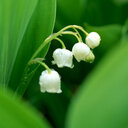[Early diagnosis of lingual thyroglossal duct cyst in newborns: analysis of 10 cases previously misdiagnosed as laryngomalacia].
Schlüsselwörter
Abstrakt
OBJECTIVE
To distinguish lingual thyroglossal duct cyst (LTDC) from laryngomalacia in newborn infants.
METHODS
Data of 10 newborn infants with laryngeal stridor and dyspnea, admitted to the department of neonatology in our hospital during December, 2004 to August, 2007, who were finally diagnosed with LTDC though previously diagnosed as congenital laryngeal stridor in other hospitals, were summarized and analyzed.
RESULTS
Inspiratory stridor with chest wall retractions was cardinal symptom of newborn with LTDC. A slightly gray and round cyst with smooth surface at the base of the tongue was found with laryngoscopy. On computed tomography examination of larynx, a well-circumscribed lesion with low intensity was detected at the base of the tongue protruding into the air passage. Pathological examination demonstrated that the cyst wall was composed of tabular and columnar epithelium.
CONCLUSIONS
LTDC is a common disease in newborns, which is similar to laryngomalacia. For neonates suspected of LTDC, laryngoscopic examination should be performed first, while laryngeal CT scan is an important diagnostic basis. Cyst puncture can ameliorate the symptoms of the patients, while surgical removal is the method of radical cure.


